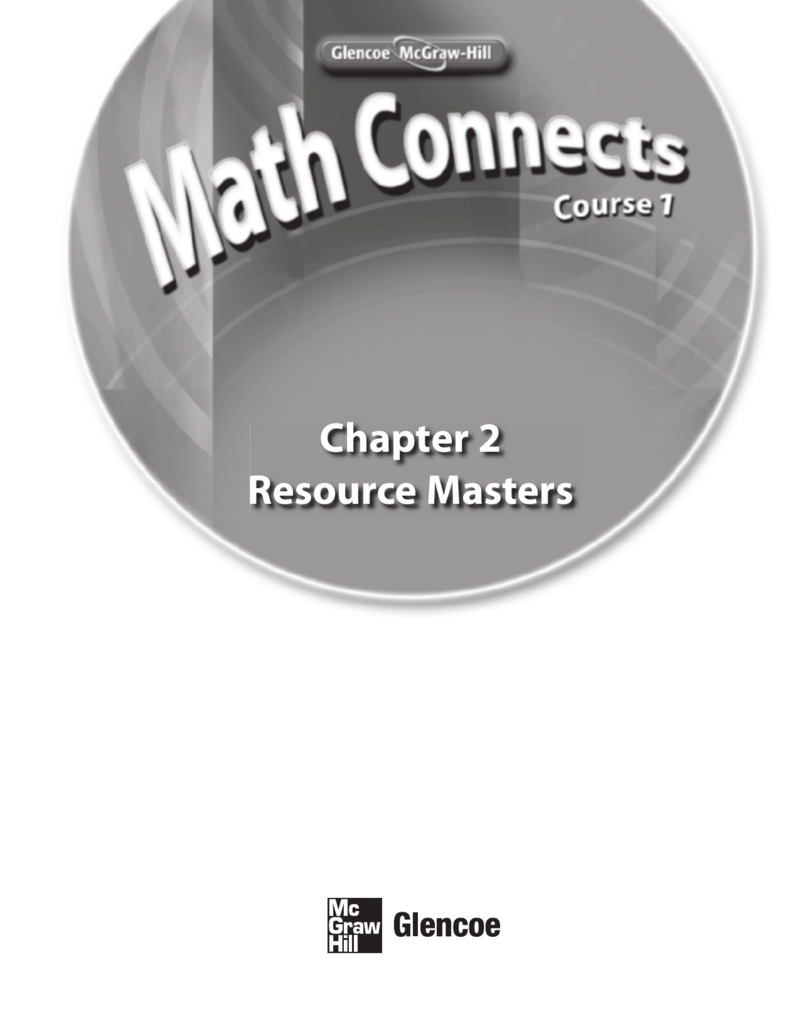- Chapter 2: Patterns And Relationsmr. Mac's Pages
- Chapter 2: Patterns And Relationsmr. Mac's Page Numbering
- Chapter 2: Patterns And Relationsmr. Mac's Page Sheet
- Chapter 2: Patterns And Relationsmr. Mac's Page Printable
N ext Page Note: Clicking any of the following links will take you to another website unless otherwise indicated. Note: An asterisk (.) next to a project indicates that it's a PDF file. During 2013–2018, 10 outbreaks of serogroup B meningococcal disease occurred on college campuses, resulting in 39 cases and 2 deaths (range, 2–9 cases per outbreak. In addition, outbreaks of serogroup C meningococcal disease have been reported among men who have sex with men (MSM) in major metropolitan areas 8,9. MATH TEST- Friday, September 25- My kids will have their first math test in grade 3. Chapter 1- Patterns in Mathematics The test will be very similar to the workbook that we do in class and their homework book that they have been working on at home for homework. Copy and paste code samples, organize your favorites, down- load chapter s, bookmark key sections, create notes, print out pages, and benefit from tons of other time-saving features. 278 pages, published by mrbankim.debnath, 2014-02-12 07:01:49.
GeomeTricks Series: Chapter Details This page describes the contents of each GeomeTricks book in detail, including pictures and videos of models created in each chapter. |
| Aperiodic Patterns Book 1: Rotational and Spiral Tiling | |
| Aperiodic Patterns Book 2: Advanced Spiral Tiling | |
| Aperiodic Patterns Book 3: Patterns Based on Fives | |
| Fractals Book 2: Star Fractals | |
| Periodic Patterns Book 4: Patterns with Irregular Polygons | 3D Solids Book 1: Basic Platonic and Archimedean Solids |
| 3D Solids Book 2: Golden Rectangles Solids |
Geometricks Symmetry Series Flipping and Spinning Shapes in SketchUp Make 2014 87 pages (5.5' x 8'.5' printed book) |

Chapter 1: Mirror Symmetry This chapter will explain how to copy objects over lines of symmetry, using the Move, Rotate, and Scale tools. | |
Chapter 2: Rotational Symmetry This chapter starts off with squares, and divides them into smaller squares to make pinwheel patterns. A lot of scaling is used here. | |
Chapter 3: More Rotating Patterns This chapter explains how you can shrink or grow a polygon, and add overlappng shapes, to make neat-looking spiral and rotated patterns. |
Geometricks Symmetry Series Creating and Animating Patterns with Spiral Symmetry in SketchUp Make 2014 59 pages (5.5' x 8'.5' printed book) |
Chapter 1: Spiral Patterns In the first chapter, you'll create increasingly smaller polygons, and paint them in spiral patterns. |
Chapter 2: Animating Spirals In this chapter, you'll learn how to use layers, groups, and scenes to animate your spirals, making them look like they're spinning. Play the movie to the right to see what we mean ---> |
Geometricks Periodic Patterns Making Tesselations with Triangles, Quadrilaterals and Hexagons in SketchUp Make 2014 34 pages (5.5' x 8'.5' printed book) |

Chapter 1: Triangle Patterns In the first chapter, you'll make tesselations with regular and irregular triangles. | |
Chapter 2: Quadrilateral Patterns In this chapter, you'll make tesselations with regular and irregular quadrilaterals. | |
Chapter 3: Hexagon Patterns In this chapter, you'll see the one and only way you can tile regular hexagons. | |
Chapter 4: Patterns with Holes In this chapter, you'll see what happens when you copy polygons so that holes are left between them. |
Geometricks Periodic Patterns Making Semi-Regular and Demi-Regular Tesselations using SketchUp Make 2014 88 pages (5.5' x 8'.5' printed book) |
Chapter 2: Patterns And Relationsmr. Mac's Pages
Chapter 1: Making Polygons In the first chapter, you'll create a set of polygons that have identical edge lengths . | |
Chapter 2: Packing a Vertex This chapter shows the various ways you can arrange polygons to completely fill the space around a vertex. | |
Chapter 3: Semi-Regular Patterns In this chapter you'll learn how to make the eight standard patterns in which each vertex is surrounded by the same polygons. | |
Chapter 4: Demi-Regular Patterns In this chapter, you'll make patterns for which there can be different arrangments at each vertex. | |
Chapter 5: Coloring Mosaics In this chapter, you'll learn a few ways you can change the colors of your patterns: keeping the pattern intact, removing the repeating pattern, and printing a 'blank' mosaic for coloring by hand. |
Geometricks Periodic Patterns Making Regular Tesselations into Complicated-Looking Patterns, using Google SketchUp 7 96 pages (5.5' x 8'.5' printed book) |
Chapter 1: Making Polygons In the first chapter, you'll create a set of polygons that have identical edge lengths . | |
Chapter 2: Copying a Pattern This chapter shows what you can get when you start with a semi- or demi-regular pattern and copy it onto itself. | |
Chapter 3: Joining Faces In this chapter you'll learn how to modify patterns by removing some edges. | |
Chapter 4: Duals In this chapter, you'll learn how to start with one pattern and create a completely different one by drawing lines between center points. | |
Chapter 5: Coloring Mosaics In this chapter, you'll learn a few ways you can change the colors of your patterns: keeping the pattern intact, removing the repeating pattern, and printing a 'blank' mosaic for coloring by hand. |
Geometricks Periodic Patterns Tesselations with Pentagons and Hexagons, using SketchUp Make 2014 93 pages (5.5' x 8'.5' printed book) |
Chapter 1: Basic Pentagon Patterns In the first chapter, you'll learn several ways to create irregular pentagons so that they will tesselate. |
Chapter 2: Round Pentagon Patterns This chapter shows how to arrange irregular pentagons in circular tilings. |
Chapter 3: Pentagons with Some Math This chapter requires a bit of number-crunching, solving for edge lengths and angles to make pentagons that tile. |
Chapter 4: Hexagons In this chapter, you'll make tesselations with irregular hexagons. |
Geometricks Aperiodic Patterns Shapes that make Round and Spiral Patterns, using SketchUp Make 2014 101 pages (5.5' x 8'.5' printed book) |

Chapter 1: Tiling Triangles In this chapter you'll make rotational and spiral tiling patterns, using isoceles, regular, and scalene triangles. | |
Chapter 2: Tiling Polygons In this chapter, you'll learn how to make irregular octagons that form funky rotational and spiral patterns. | |
Chapter 3: Radial Spiral Tiles This chapter focuses on logarithmic spirals: shapes that maintain the same proportions but get progessively larger in each ring. |
Geometricks Aperiodic Patterns Creating Hirschhorn, Bent Wedge, and Voderberg Tiles, using SketchUp Make 2014 79 pages (5.5' x 8'.5' printed book) |
Chapter 1: Hirschhorn Tile In the first chapter, you'll learn the math behind this famous five-sided shape, and learn a few ways to tile it. | |
Chapter 2: Bent Wedge In this chapter, you'll learn the math behind this nine-sided shape, and see how it can tile. | |
Chapter 3: Voderberg Tile The math for this nine-sided tile is a little complex, requiring some creative geometric thinking. Once you create it, you can make fantastic rotational and spiral patterns. |
Geometricks Aperiodic Patterns Creating Kepler and Penrose Tiles, using SketchUp Make 2014 91 pages (5.5' x 8'.5' printed book) |
Chapter 1: Kepler Tiles In the first chapter, you'll learn how to make some of Kepler's famous patterns, based on regular pentagons and decagons. | |
Chapter 2: Penrose Rhombs In this chapter you'll learn the math behind Penrose's famous 'fat' and 'skinny' rhombs, and see how to embelish these two tiles for an infinite variety of star-based patterns. | |
Chapter 3: Penrose Kites and Darts In this chapter you'll learn the interesting math behind Penrose's 'kite' and 'dart' tiles. These tiles are embellished with arcs, and together they can create wonderful rotational tilings. |

Geometricks Fractals Creating Rep-Tiles and Fractals, using SketchUp Make 2014 84 pages (5.5' x 8'.5' printed book) |
Chapter 1: Rep-Tiles In the first chapter, you'll learn the math behind several types of tiles, that, when repeated, form larger versions of themselves. | |
Chapter 2: Fractal Tiles In this chapter, you'll start with simple shapes, and copy them to form larger, tiling shapes that interlock like jigsaw puzzle pieces. | |
Chapter 3: Sierpinksy Triangle In this chapter you'll learn how to take a regular triangle and repeat it in increasingly larger rep-tiles, forming an infinite star. | |
Chapter 4: Pythagorean Trees In this chapter you'll use the relationships between angles of a right triangle to make trees with increasingly smaller branches. |
Geometricks Fractals Creating Stars, Mosaics, and Animation, using SketchUp Make 2014 52 pages (5.5' x 8'.5' printed book) |
Chapter 1: Fractals from Stars In the first chapter, you'll start with a simple triangle, and rotate-copy it to make increasingly larger fractal stars . |
Chapter 2: Fractal Mosaics In this chapter, you'll take the stars from Chapter 1 and make mosaic patterns with them. |
Chapter 3: Animating Star Fractals In this chapter, you'll start out with two very different stars, and create their fractals. After using scenes and layers to animate them, you'll see the stars start to look more and more similar. Play the movie to the right to see the fractal animation --> |

3D Solids Cubes, Octahedrons, Tetrahedrons and More, 120 pages (5.5' x 8'.5' printed book) |
Chapter 2: Patterns And Relationsmr. Mac's Page Numbering
Chapter 1: Cube In the first chapter, you'll learn a few different ways to create a cube. You'll also learn how to change a cube to get some of the simple Archimedean solids, see how a cube can be divided into pyramids, plus get a quick look at duals. | |
Chapter 2: Octahedron In this chapter, you'll learn several ways to create an octahedron, and use it to create some more Archimedean solids. You'll also explore the relationship between the 3D octahedron and the 2D hexagon, and build an octahedron compound. | |
Chapter 3: Tetrahedron In this chapter you'll learn how to create tetrahedrons, and explore the relationship between tetrahedrons and octahedrons. |
Chapter 2: Patterns And Relationsmr. Mac's Page Sheet
3D Solids Icosahedrons, Dodecahedrons, and Some Amazing Related Solids, U sing SketchUp Make 2014 138 pages (5.5' x 8'.5' printed book) |
Chapter 2: Patterns And Relationsmr. Mac's Page Printable
Chapter 1: What's a Golden Rectangle? In the first chapter, you'll learn the math behind this famed shape. You'll also learn just how often you see this shape in nature, product design, and architecture. | |
Chapter 2: Icosahedron In this chapter, you'll learn how to start with just one golden rectangle and use it to build an icosahedron - a Platonic solid with 20 triangular sides. You'll also see how to create some Archimedean solids from the icosahedron, and how to find the icosahedron's dual. | |
Chapter 3: Dodecahedron In this chapter you'll learn how to create a 'golden 2' rectangle, and use it to make a dodecahedron. You'll also get some ideas for ways to modify your dodecahedron into some cool-looking objects. | |
Chapter 4: Compounds and Similar Objects In this chapter you'll take what you learned about icosahedrons and dodecahedrons, and make some interesting solid compounds. You'll also see ways to create similar objects, by copying 2D objects around other 2D objects, in 3D space. |
